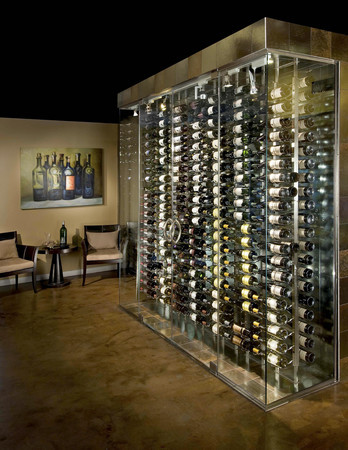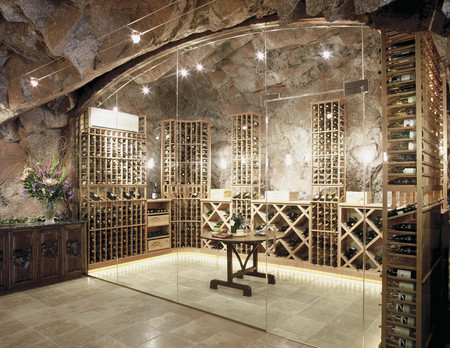Personal cellars worth ‘wining’ about


DEAR DESIGNER: I would like to add wine storage in my home. What is the best way to store and display my wine? — Mary Jane
DEAR MARY JANE: Refrigerated and passive wine cellars (does not require temperature or humidity control) are becoming increasingly popular in homes.
In order to store fine bottles of wine and keep their integrity they should be housed in a climate-controlled storage area. On the other hand, if you are looking for a decorative way to display wine that you will be drinking and rotating often, you may not need a refrigeration unit.
Walk-in wine cellars are both decorative and functional. Painted tiles, murals and stained glass can make a desert wine cellar feel like a vacation in wine country. There are many fun additions you can add to your wine cellar. A tasting table or counter can be included in order to sample your collection with other wine buffs. A humidor can be installed for cigars and don’t forget to design some large shelves to store the beautiful wood cases some wines come in.
While you can use creative license to add personal touches, it’s important to build your wine cellar correctly so your wine is properly protected. Wine bottles should be stored on their sides so the corks do not dry out and let air in, ruining the wine. The storage area needs to be in a spot that is protected from sunlight, is level and does not vibrate.
Your contractor will need to remove electrical plugs in the room, install insulation, greenboard drywall (used in wet areas like showers) and a vapor barrier. Exterior-type entry doors with a full-weather seal are generally recommended. If glass doors are used, they need to be insulating glass. Wine is best stored at temperatures between 55-58 F with 55-75 percent humidity. This environment needs to stay separate from your home’s environment, making it important to follow the specific instructions of the refrigeration manufacturer during construction.
Durette Candito of Durette Studio in Las Vegas shared that homeowners are becoming creative in the places they are installing their in-home wine cellars: under stairwells, in pantries and walk-in closets. Also, standard wall closets (2 feet deep by 7 feet wide) can be a perfect place to display your wines. Glass doors add a chic look to these converted spaces.
If you don’t have the space for a built-in wine cellar, consider a wine refrigerator. Some fit under your kitchen counter and hold approximately 46 bottles while others are as large as a refrigerator, holding between 300-600 bottles. These are handy if you want to store your cherished bottles but you do not have the space or budget to create a large walk-in.
Don’t forget to ask the expert about the noise factor when purchasing a wine cooling system. When buying or building a refrigeration system of any sort, you are purchasing a type of refrigerator. Refrigerators are noisy, but quieter models are available for the asking.
Weigh the costs before you build. An in-home wine cellar with refrigeration can be built for $12,000 to $20,000. Remember also to factor in the cost of running the system.
Once your wine cellar is completed, check out various wine inventory Web sites. You can keep track of where your bottles are stored in your cellar, the price you paid and the worth of your collection at Web sites like www.cellartracker.com.
Wine cellars are a lovely addition to a home whether you are collecting and storing cherished wine or having light-hearted wine tastings with your friends. By adding some decorative treasures you’ve collected from various vineyards you’ve visited, your wine cellar can bring back delightful memories of where your wine was first purchased and enjoyed.
Cindy Payne is a certified interior designer with more than 25 years of experience, a member of the American Society of Interior Designers, as well as a licensed contractor. E-mail questions to her at deardesigner@projectdesign interiors.com or send them to her at Project Design Interiors, 2620 S. Maryland Parkway, Suite 189, Las Vegas, NV 89109. She can be reached online at www.project designinteriors.com.












